JuiceCyclone Power Cable Conditioner

DarqueKnight
Posts: 6,765
Introduction
Audio cable conditioning theorists generally fall into three groups:
1. Those who believe that cable break in is due only to voltage conditioning of the cable's insulation, which acts as a dielectric.
2. Those who believe that cable break in is due only to current conditioning of the cable's conductors.
3. Those who believe that cable break in is due to voltage conditioning of the cable's insulation and current conditioning of the cable's conductors.
I am in group three.
There are some well regarded audiophile cable conditioning products available (e.g. FryCleaner, Audiodharma Cable Cooker). Nordost's "Vidar" cable conditioning system is not commercially available. It is only made available to their dealers.
I recently ordered an Audiodharma Cable Cooker for my interconnect and speaker cables. The Cable Cooker conditions power cables also, but it only supplies 1.88 amps continuous, which my 7 and 8 gauge power cables would laugh to scorn.
Power cables and power line accessories (receptacles, adapters, filters, etc.) typically take hundreds of hours (typically 300 to 500 hours) to break in and reach their full sonic performance. In the case of cryogenically treated items, the break in time may be increased to double, close to double or more than double.
Manufacturers usually specify a break in time for their power products that is based on the user pulling at least 1 amp of continuous current through the cable or device for a certain number or hours (amp-hours). I have learned a lot from the tedious process of noting changes in power equipment as it breaks in. However, that long drawn-out process is something I would like to avoid in the future. Hence, I went and got some help. I constructed a device, the "JuiceCyclone", that pulls copious amounts of current through power cables and other power line accessories, thereby reducing the break in time from weeks and months to days and hours. Going forward, I will make initial listening notes and then put power cables and power line accessories on the Cyclone for accelerated break in.:)
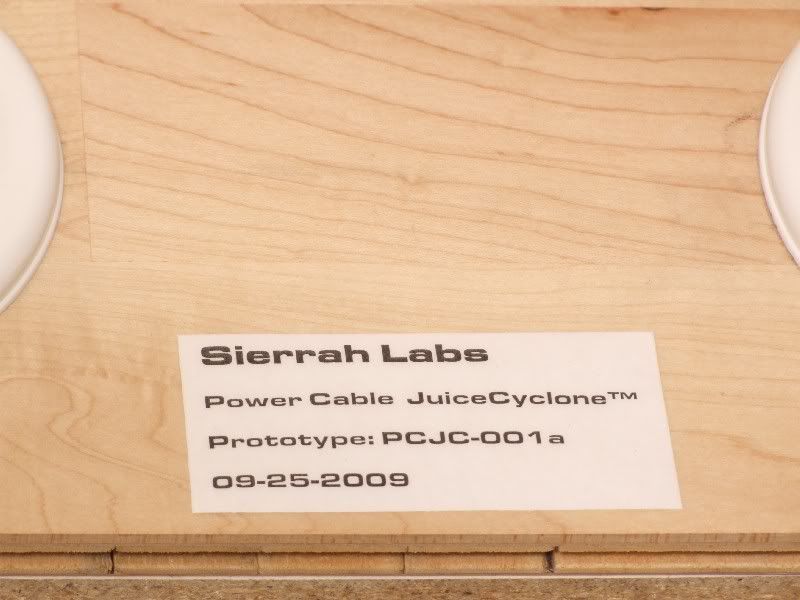
Figure 1. The JuiceCyclcone reduces power cable and power accessory break in times from weeks and months to days and
hours.
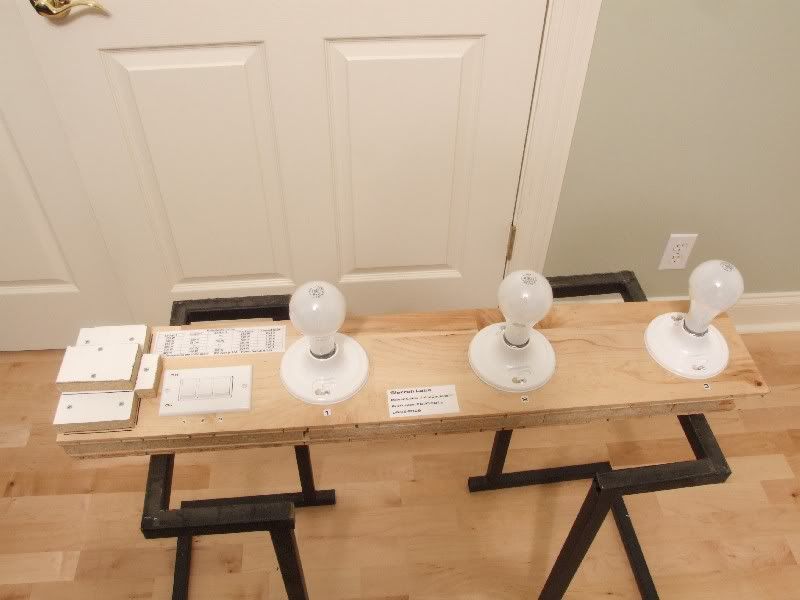
Figure 2. JuiceCyclone prototype with three 250 watt bulbs (750 watts, 6.25 amp current draw). My household wall voltage
averages 120 volts.

Figure 3. JuiceCyclone prototype with four 250 watt bulbs and two 100 watt bulbs (1200 watts, 10 amp current draw).
The JuiceCyclone comprises a 10 amp IEC socket, a triple light switch, Romex 12 gauge wiring, an assortment of 300 watt, 250 watt and 100 watt light bulbs, three keyless incandescent light bulb sockets and three double bulb socket adapters. The chassis was constructed of scrap lumber I had in my garage. The Romex wire was left over from an AC circuit install. The total cost of materials for the Cyclone was $50. The cost of materials for 9 power cord daisy chaining adapters was $63.
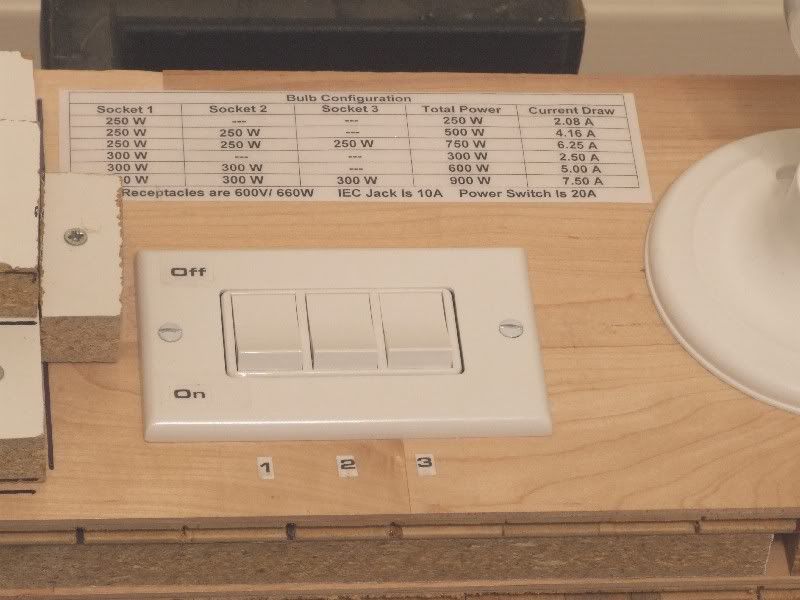
Figure 4. The bulb sockets are wired in parallel and can be individually switched.
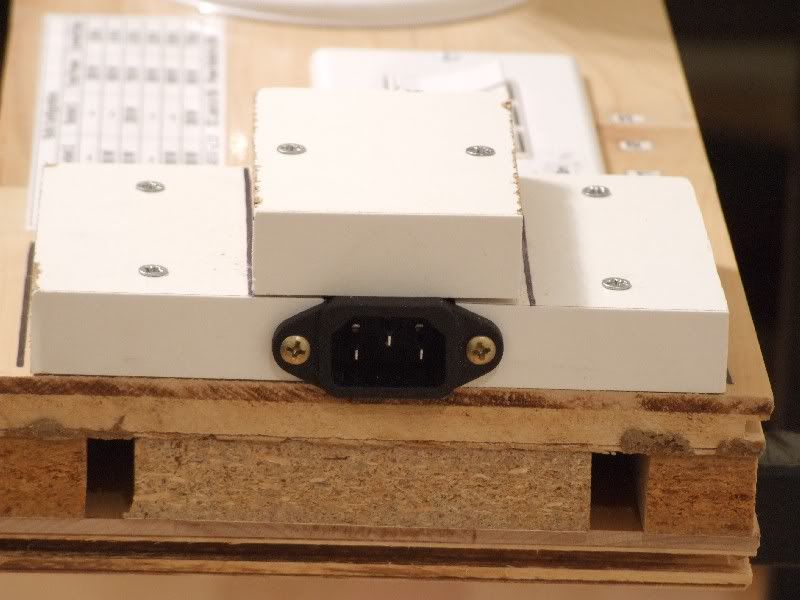
Figure 5. IEC socket.
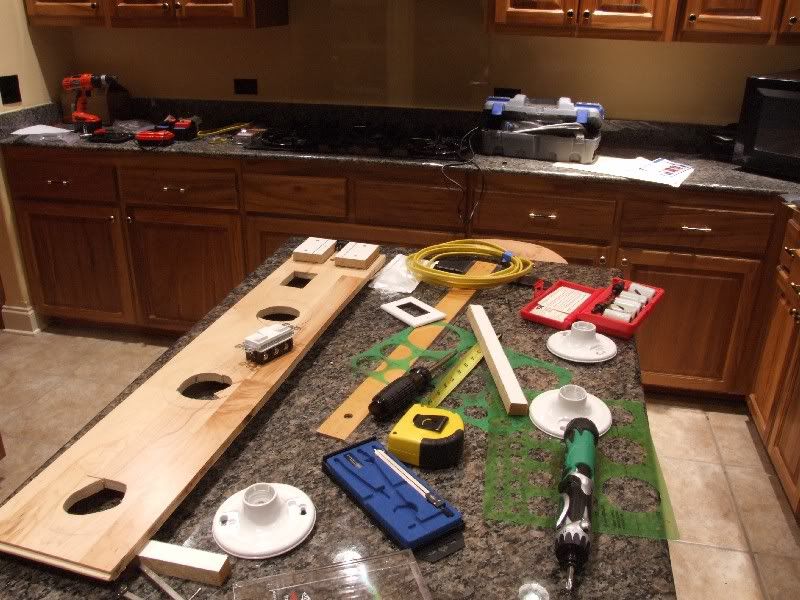
Figure 6. A long time from now, after I become a serious audio hobbyist, I'm going to build a dedicated workshop for my projects.
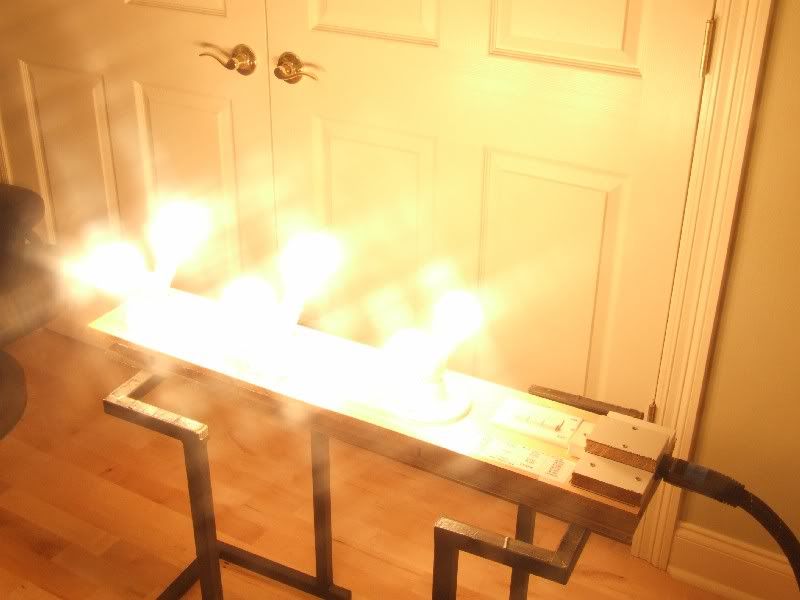
Figure 7. The "Juice" is loose! Pulling 10 amps continuous!
Power Cable Break In Trials
Current load was calculated based on a nominal wall voltage of 120 volts. My wall voltage is usually in the range of 121 to 123 volts. When the AC circuit is loaded with 250 watts continuous (one 250 watt bulb) the voltage drops 1.4 volts. The voltage drops 2.8 volts with a 500 watt load, 4.2 volts with a 750 watt load, 5.6 volts with a 1000 watt load and 7 volts with a 1200 watt load.
Trial 1
The Signal Cable MagicPower cord on my home office plasma television has well over the specified 50 amp-hour break in time. However, I replaced that cord with another MagicPower cord that had been on the Cyclone for 32 hours with a load of 750 watts (6.25 amps, 200 amp-hours). The picture from broadcast HDTV sources was noticeably clearer. I did not see any improvement from Blu-ray sources.
Trial 2
The Signal Cable MagicPower cord on my home theater system plasma television was switched with a MagicPower cord that had been on the Cyclone for 50 hours with a load of 750 watts (6.25 amps, 312.5 amp-hours). High definition broadcasts were a little clearer. I did not see any improvement from Blu-ray sources.
Trial 3
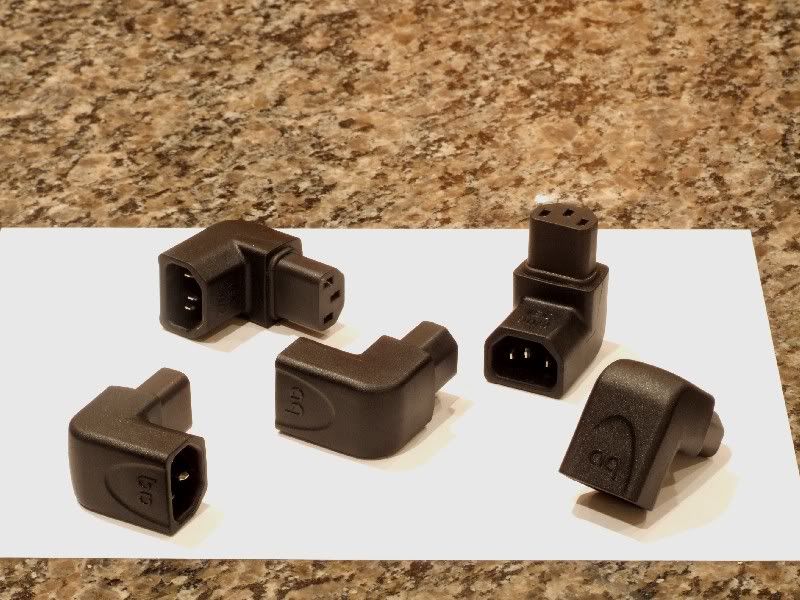
Figure 8. These AudioQuest IEC right angle adapters improved with Cyclonic aging.
I purchased a few AudioQuest right angle IEC adapters. One was to be used as a strain relief for the heavy PS Audio Premier SC power cord hanging off the rear of the SACD player in my two channel system. The rest were spares for future use. When I installed the adapter, I immediately heard a veiling over the sound. I sent an email to AudioQuest asking if these adapters required break in:
"I purchased an AQ IEC90-2 right angle connector to use with my SACD player's power cord in a tight area. I noticed a veiling of the sound after the IEC90-2 was attached. Bass was particularly smeared.
I attached the IEC90-2 connector to the power cord of a CD player in another audio system and I heard the same veiling and bass smearing.
Do these connectors need to be broken in over a certain period of time?"
I received this reply from AudioQuest Product Specialist Alasdair Patrick:
There is no wire in the IEC adapters, so no break in is necessary. I have never experienced this before. The only thing I can suggest is to exchange the adapter.
My reply:
"Audiophile AC receptacles don't contain wire, but their manufacturers (PS Audio, Furutech, Oyaide, etc.) specify a break in period. I assumed something similar might be required for the metal in the IEC90."
Mr. Patrick's reply:
"Break-in" involves the dielectric rather than the metal. Having said that, I guess the molded plastic could act as a dielectric, so leave things hooked up and running as much as possible for 10 - 14 days and see if things get any better.
I daisy-chained all of the IEC90-2 adapters, attached one end to the Cyclone and the other end to a power cord. After 24 hours with a load of 750 watts (6.25 amps, 150 amp-hours), the overall veiling was gone, but the bass was a bit less well defined compared to the Premier cord alone. After another 6 hours (37.25 amp-hours) on the Cyclone, I could not hear a difference between the Premier cord and the Premier cord with the IEC90-2 adapter attached.
Trial 4
I re-burned my 2 channel rig's power cords for an additional 320 amp-hours with a load of 1200 watts (32 hours at 10 amps). I made some adapters so that I could daisy chain the 7 power cords. Audioexcellenceaz, the manufacturer of the Cable Cooker, sells IEC power cable daisy chain adapters for $10. The parts cost for my homemade adapters was $7. I made 9 of them for a total of $63.
While my PS Audio cords were soaking, I reinstalled the Signal Cable MagicPower cords that were used previous to the PS Audio cords.
The system sounded good with the MagicPower cords, but I was missing some things:
1. I had to turn the volume up due to the raised noise floor.
2. The sound stage shrank a bit in width and a lot in depth.
3. The enhanced three-dimensionality I had been spoiled by for so long was gone.
4. The razor sharp bass transients and subtle complex bass micro growls (growls within growls) I had grown a accustomed to were gone.
5. Image weight was reduced, particularly at the sides and rear of the sound stage.
It is amazing when you hear how the quality of a piece of wire between the wall outlet and a component affects the quantity and quality of information heard.
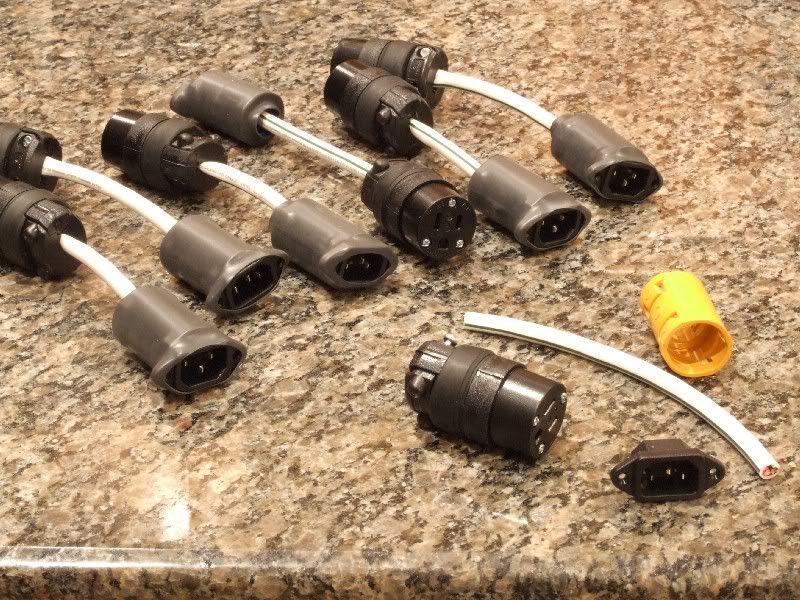
Figure 9. "Hammerhead" IEC power cable daisy chain adapters.

Figure 10. Such Good Juice! The 2 channel rig's power cables prepare to get zapped with 10 amps continuous. Power cables are
dumb. It makes no difference to them whether the device pulling current through them is an audio component or a light bulb.
After 150 amp-hours, I swapped out the MagicPower cord on the right amp with its PS Audio PerfectWave AC-12 cord. The left side of the sound stage was drowned out by the right side. Furthermore, the right side of the stage was wider, deeper and more detailed. I put the left amp's AC-12 back in and both sides were balanced, but I didn't hear any improvement from the additional burn in time.
After an additional 170 amp-hours, all cables were reinstalled. I didn't hear any difference or improvement. Seems my two channel system's power cables really were broken in.
Audio cable conditioning theorists generally fall into three groups:
1. Those who believe that cable break in is due only to voltage conditioning of the cable's insulation, which acts as a dielectric.
2. Those who believe that cable break in is due only to current conditioning of the cable's conductors.
3. Those who believe that cable break in is due to voltage conditioning of the cable's insulation and current conditioning of the cable's conductors.
I am in group three.
There are some well regarded audiophile cable conditioning products available (e.g. FryCleaner, Audiodharma Cable Cooker). Nordost's "Vidar" cable conditioning system is not commercially available. It is only made available to their dealers.
I recently ordered an Audiodharma Cable Cooker for my interconnect and speaker cables. The Cable Cooker conditions power cables also, but it only supplies 1.88 amps continuous, which my 7 and 8 gauge power cables would laugh to scorn.
Power cables and power line accessories (receptacles, adapters, filters, etc.) typically take hundreds of hours (typically 300 to 500 hours) to break in and reach their full sonic performance. In the case of cryogenically treated items, the break in time may be increased to double, close to double or more than double.
Manufacturers usually specify a break in time for their power products that is based on the user pulling at least 1 amp of continuous current through the cable or device for a certain number or hours (amp-hours). I have learned a lot from the tedious process of noting changes in power equipment as it breaks in. However, that long drawn-out process is something I would like to avoid in the future. Hence, I went and got some help. I constructed a device, the "JuiceCyclone", that pulls copious amounts of current through power cables and other power line accessories, thereby reducing the break in time from weeks and months to days and hours. Going forward, I will make initial listening notes and then put power cables and power line accessories on the Cyclone for accelerated break in.:)

Figure 1. The JuiceCyclcone reduces power cable and power accessory break in times from weeks and months to days and
hours.

Figure 2. JuiceCyclone prototype with three 250 watt bulbs (750 watts, 6.25 amp current draw). My household wall voltage
averages 120 volts.

Figure 3. JuiceCyclone prototype with four 250 watt bulbs and two 100 watt bulbs (1200 watts, 10 amp current draw).
The JuiceCyclone comprises a 10 amp IEC socket, a triple light switch, Romex 12 gauge wiring, an assortment of 300 watt, 250 watt and 100 watt light bulbs, three keyless incandescent light bulb sockets and three double bulb socket adapters. The chassis was constructed of scrap lumber I had in my garage. The Romex wire was left over from an AC circuit install. The total cost of materials for the Cyclone was $50. The cost of materials for 9 power cord daisy chaining adapters was $63.

Figure 4. The bulb sockets are wired in parallel and can be individually switched.

Figure 5. IEC socket.

Figure 6. A long time from now, after I become a serious audio hobbyist, I'm going to build a dedicated workshop for my projects.

Figure 7. The "Juice" is loose! Pulling 10 amps continuous!
Power Cable Break In Trials
Current load was calculated based on a nominal wall voltage of 120 volts. My wall voltage is usually in the range of 121 to 123 volts. When the AC circuit is loaded with 250 watts continuous (one 250 watt bulb) the voltage drops 1.4 volts. The voltage drops 2.8 volts with a 500 watt load, 4.2 volts with a 750 watt load, 5.6 volts with a 1000 watt load and 7 volts with a 1200 watt load.
Trial 1
The Signal Cable MagicPower cord on my home office plasma television has well over the specified 50 amp-hour break in time. However, I replaced that cord with another MagicPower cord that had been on the Cyclone for 32 hours with a load of 750 watts (6.25 amps, 200 amp-hours). The picture from broadcast HDTV sources was noticeably clearer. I did not see any improvement from Blu-ray sources.
Trial 2
The Signal Cable MagicPower cord on my home theater system plasma television was switched with a MagicPower cord that had been on the Cyclone for 50 hours with a load of 750 watts (6.25 amps, 312.5 amp-hours). High definition broadcasts were a little clearer. I did not see any improvement from Blu-ray sources.
Trial 3

Figure 8. These AudioQuest IEC right angle adapters improved with Cyclonic aging.
I purchased a few AudioQuest right angle IEC adapters. One was to be used as a strain relief for the heavy PS Audio Premier SC power cord hanging off the rear of the SACD player in my two channel system. The rest were spares for future use. When I installed the adapter, I immediately heard a veiling over the sound. I sent an email to AudioQuest asking if these adapters required break in:
"I purchased an AQ IEC90-2 right angle connector to use with my SACD player's power cord in a tight area. I noticed a veiling of the sound after the IEC90-2 was attached. Bass was particularly smeared.
I attached the IEC90-2 connector to the power cord of a CD player in another audio system and I heard the same veiling and bass smearing.
Do these connectors need to be broken in over a certain period of time?"
I received this reply from AudioQuest Product Specialist Alasdair Patrick:
There is no wire in the IEC adapters, so no break in is necessary. I have never experienced this before. The only thing I can suggest is to exchange the adapter.
My reply:
"Audiophile AC receptacles don't contain wire, but their manufacturers (PS Audio, Furutech, Oyaide, etc.) specify a break in period. I assumed something similar might be required for the metal in the IEC90."
Mr. Patrick's reply:
"Break-in" involves the dielectric rather than the metal. Having said that, I guess the molded plastic could act as a dielectric, so leave things hooked up and running as much as possible for 10 - 14 days and see if things get any better.
I daisy-chained all of the IEC90-2 adapters, attached one end to the Cyclone and the other end to a power cord. After 24 hours with a load of 750 watts (6.25 amps, 150 amp-hours), the overall veiling was gone, but the bass was a bit less well defined compared to the Premier cord alone. After another 6 hours (37.25 amp-hours) on the Cyclone, I could not hear a difference between the Premier cord and the Premier cord with the IEC90-2 adapter attached.
Trial 4
I re-burned my 2 channel rig's power cords for an additional 320 amp-hours with a load of 1200 watts (32 hours at 10 amps). I made some adapters so that I could daisy chain the 7 power cords. Audioexcellenceaz, the manufacturer of the Cable Cooker, sells IEC power cable daisy chain adapters for $10. The parts cost for my homemade adapters was $7. I made 9 of them for a total of $63.
While my PS Audio cords were soaking, I reinstalled the Signal Cable MagicPower cords that were used previous to the PS Audio cords.
The system sounded good with the MagicPower cords, but I was missing some things:
1. I had to turn the volume up due to the raised noise floor.
2. The sound stage shrank a bit in width and a lot in depth.
3. The enhanced three-dimensionality I had been spoiled by for so long was gone.
4. The razor sharp bass transients and subtle complex bass micro growls (growls within growls) I had grown a accustomed to were gone.
5. Image weight was reduced, particularly at the sides and rear of the sound stage.
It is amazing when you hear how the quality of a piece of wire between the wall outlet and a component affects the quantity and quality of information heard.

Figure 9. "Hammerhead" IEC power cable daisy chain adapters.

Figure 10. Such Good Juice! The 2 channel rig's power cables prepare to get zapped with 10 amps continuous. Power cables are
dumb. It makes no difference to them whether the device pulling current through them is an audio component or a light bulb.
After 150 amp-hours, I swapped out the MagicPower cord on the right amp with its PS Audio PerfectWave AC-12 cord. The left side of the sound stage was drowned out by the right side. Furthermore, the right side of the stage was wider, deeper and more detailed. I put the left amp's AC-12 back in and both sides were balanced, but I didn't hear any improvement from the additional burn in time.
After an additional 170 amp-hours, all cables were reinstalled. I didn't hear any difference or improvement. Seems my two channel system's power cables really were broken in.
Proud and loyal citizen of the Digital Domain and Solid State Country!
Post edited by DarqueKnight on
Comments
-
Trial 5

Figure 11. PS Audio PerfectWave AC-5 power cables.
I purchased two PS Audio AC-5 power cords for the two Power Plant Premier (PPP) AC regenerators in my home theater system. These cords replaced Signal Cable MagicPower cords. Straight out of their boxes, I immediately heard:
1. Heavier images in the sound stage.
2. More overall clarity and detail.
3. Apparently higher sound level (lower noise floor).
4. The pace of music, especially bass, was faster.
5. More holographic, three-dimensional sound stage.
6. More air and more recording space wall reflections.
7. More bass slam.
8. More articulate, tactile and well defined bass.
9. More subtle bass growl effects.
10. Tighter integration between the subwoofer drivers, and the small, lightweight drivers of the front, center and surround speakers.
The source component for all of the above was a 21 year old Yamaha CDX-1110U CD player with a retrofitted IEC power cord jack and a Signal Cable MagicPower cord.
As with the AC-12 cables installed in my two channel system, the AC-5's initially exhibited a bit of high frequency tizziness and grain. In my AC-12 review, I reported that AC-12's sounded good between the wall and a component and sounded bad between a component and a PPP. I experienced the same thing with the AC-5. In addition to veiled sound when an AC-5 was between a PPP and the Blu-ray player, I also saw a decrease in visual detail in the plasma TV picture. For example, during the opening car chase scene in "Quantum of Solace", the sheen and reflectivity of automobile paint was muted, as was the sheen of sweat on actor's faces. I borrowed one of the well broken in AC-12's from my two channel system. Losses in aural and visual detail were apparent with them also, but to a greater degree. The AC-12 is PS Audio's top of the line power cord and the AC-5 is third in the series. I had expected better results with the AC-12, but after I thought about it, I realized the higher quality AC-12 has more of whatever it is the outbound side of the PPP does not like, therefore it is reasonable that the AC-5 would be less detrimental than the AC-12. I sent these results to PS Audio and I am still waiting for their comments.
When watching Blu-ray movies with the AC-5's installed between the PPP's and the wall, I saw no difference or improvement in the plasma TV picture. However, audio, especially dialog, was much clearer and bass and low frequency effects had more tactility, definition, and clarity. There was a noticeable improvement in broadcast HDTV picture quality.
After the initial listening and viewing session, both AC-5's were burned in on the Cyclone for 32 hours at 10 amps (320 amp-hours). After burn in:
1. The high frequency tizziness and grain was gone and was replaced by a silky smooth and detailed top end.
2. All of the benefits noted in items 1-10 above were increased, especially bass weight and slam.
3. There was more midrange liquidity.
Since I was getting such good results from upgrading the AC receptacles and AC regenerator power cords, my mind naturally ran to what would happen if I upgraded the rest of the power cords in my home theater. However, that is a subject I'll save for the sixth installment of ''Tweaking Home Theater".;)
Wallbox And Y-Adapter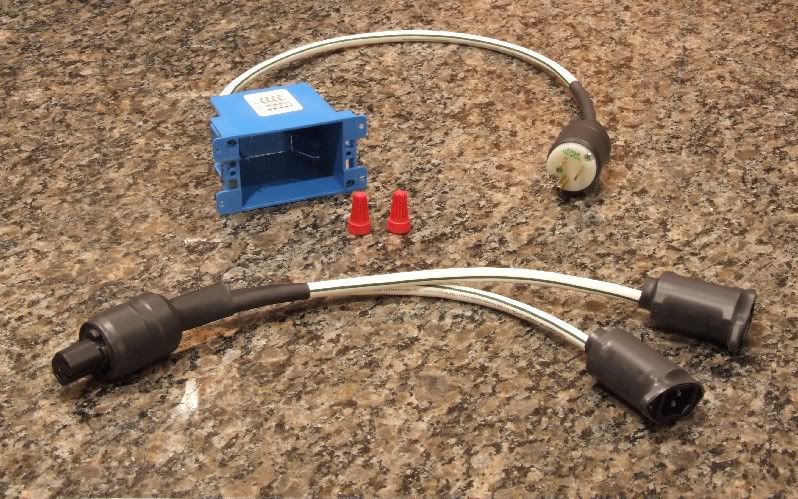
Figure 12. The wallbox and Y-adapter facilitate the break in of audio grade AC receptacles.
The wallbox's power cable is connected to the receptacle and the receptacle is installed in the wallbox. Power cables are connected to each outlet on the receptacle. The other end of the power cables is connected to the Y-adapter. The adapter's IEC plug is inserted into the Cyclone's IEC jack then the wallbox's plug is connected to mains power. Even though both outlets are connected together inside the receptacle, if current is only running through one outlet, only the dielectric material surrounding that outlet will be conditioned.
Heat Considerations
The Cyclone was set up in a guest bedroom and laid across a pair of SDA CRS+ speaker stands. The door was left open and the ceiling fan was turned on. In the 750 watt configuration, the temperature between bulbs at the surface of the Cyclone chassis was 108 degrees F. The room temperature was raised 1 degree F. In the 1200 watt configuration, the temperature between bulbs at the surface of the Cyclone chassis was 115 degrees F. The room temperature was raised 3 degrees F.
After 32 hours in the 1200 watt configuration, the power cable jackets, the small diameter 12/2 adapter cable jackets, the metal blades of the cord plugs, or the Cyclone's IEC jack were warm.
Conclusions
I have been amused by the methods that audiophiles have employed to break in their audio power cables and associated accessories: electric space heaters, fans, refrigerators, light bulbs on extension cords, etc. I once tried to break in a cryoed Power Port Premier receptacle by plugging my refrigerator into it for a couple of weeks. That still wasn't enough time and I sent the receptacle back.
A device like the JuiceCyclone is a handy thing to have around if one of the break in methods listed above is impractical or unappealing or if you are not interested in nurse-maiding a power cable, AC receptacle or power line filter through its break in process. It is particularly efficient for the break in of cryogenically treated items, which typically have break in times that are on the order of twice that of a corresponding non-cryoed part. Another application would be re-breaking in cables that have been in storage for a long time or cables that have sat idle in a system that has been turned off for weeks.
Further Study
When the Audiodharma Cable Cooker arrives I will reburn the AudioQuest DBS interconnects and speaker cables in my two channel rig. I have found only one report from someone who used the Cable Cooker on AudioQuest's DBS (Dielectric Bias System) cables. He reported an improvement. I posed the following question to Alasdair Patrick, AudioQuest Product Specialist:
''Are you familiar with the Cable Cooker break in device? I have Sky XLR interconnects, LeoPard tonearm cable and Everest speaker cables, all 72V DBS.
Would you recommend using a device like the Cable Cooker with my DBS IC's and speaker cable?
Here is a link to the Cable Cooker website: http://audioexcellenceaz.com/audiodharmacablecooker.htm."
Mr. Patrick's reply:
"You could use another cable break-in device if you wish, although considering that that is what the DBS pack is doing, I don't know that it's necessary."
We'll see.
Associated Equipment
Two Channel System
■Pass Laboratories X.02 Preamp
■Pass Laboratories Xono Phono Preamp
■Parasound Halo JC1 Monoblock Amps (400 wpc into 8 ohms)
■Teres Audio Model 255 Turntable with Graham Phantom B-44 Tonearm and Teres Reference II Motor
■Ortofon MC Windfeld Moving Coil Cartridge
■Sonic Purity Concepts and Design Record Clamp ("The Clamp")
■Acid Etched Holographic Mylar Turntable Belt
■Cary Audio CD 306 Professional Version SACD/HDCD/CD Player
■Polk Audio SDA SRS 1.2TL Speakers (Hot Rodded)
■AudioQuest Sky 72V DBS XLR Interconnects for Amps and SACD player
■AudioQuest LeoPard 72V DBS Phono Cable
■AudioQuest Everest 72V DBS 9 AWG Speaker Cable
■PS Audio xStream Premier SC Power Cords (7 AWG ) for Preamps, SACD Player and Turntable Motor Power Supply
■PS Audio PerfectWave AC-12 Power Cord (8 AWG) For Power Plant Premier And Power Amps
■PS Audio Power Plant Premier Power Regenerator
■PS Audio Soloist Premier SE In-Wall Power Conditioners for Power Amps and Power Plant Premier
■Dedicated 20 Amp Circuit for each Monoblock Amplifier and for source components and preamplifiers
■AI-1 Dreadnought Non-Common Ground Interface for SDA speakers
■Hifi Tuning and Isoclean audio grade fuses for amplifiers and source components
■VPI 16.5 Record Cleaning Machine with fan modification
■Salamander Synergy Triple 30 Audio Credenza
Home Theater System
■Pioneer Elite PRO-151FD 60" Plasma HDTV
■Pioneer Elite BDP-09FD Blu-ray Disc Player
■Sony TA-E9000ES Digital Preamp/Processor Ver. 2.1
■Sony TA-P9000ES Analog 5.1 Multi-channel Preamp
■Two Onkyo Integra TA-2800 Cassette Decks
■Three Adcom GFA-5500 Power Amps (350 wpc into 4 ohms) for Front, Center, and Surround Speakers
■Sony ST-S730 ES Digital Tuner
■Yamaha CDX-1110U CD Player
■Dual Polk Audio LSi9 Center Channel Speakers
■Polk Audio LSi15 Surround Speakers
■SVS PB12 Ultra/2 Subwoofer with 1000 Watt Bash Amplifier
■Monoprice High Speed HDMI Cable
■Acoustic Research Coax Cable (CD)
■Monster Cable Z2 Reference Speaker Cables
■Monster Cable Z100i Interconnects
■PS Audio xStream Statement Power Cords for Amps, Preamps, Blu-ray Player, Tuner, Power Plant Premiers, CD Player and TV
■Two PS Audio Power Plant Premier Power Regenerators
■PS Audio Power Port Premier 20A AC receptacles for Power Plant Premiers
■Two Dedicated 20 Amp Circuits For Amps, TV, and Source Components
■PS Audio Soloist Premier SE Power Conditioner For Subwoofer
■Hifi Tuning and Isoclean audio grade fuses for amplifiers and source components
■Polk Audio SDA SRS Front Speakers (Hot Rodded)
■Tivo HD XL Digital Video Recorder
■Radio Shack optical cable for TV audio out to digital preamp
■Blue Jeans Cable LC-1 CM Rated In-Wall Subwoofer Cable
■Monster Cable Z200i Subwoofer Interconnects (Preamp to Wall & Wall to Sub)
■Salamander Synergy Quad 30 Audio CredenzaProud and loyal citizen of the Digital Domain and Solid State Country! -
Reserved for follow up.Proud and loyal citizen of the Digital Domain and Solid State Country!
-
Wow. I applaud your devotion, even if it enters into Patrick82 territory.
-
Hey DK,
Great article! Have you tried the Isotek Break-In and Enhancement disc on your system? For me, it's provided the most dramatic results for break-in that I have ever heard. The disc has incredibly sped up the break-in period of my CS2.3s with their stiff pro drivers.
Thanks for the article.
Mike -
Its all good DK, interesting, although, two demerits for mis-use of CRS stands.........just more proof though that Everything Matters.
RT1 -
SolidSqual wrote: »Hey DK,
Great article! Have you tried the Isotek Break-In and Enhancement disc on your system?
Yes, I have:
Accellerated SACD Burn InDarqueKnight wrote: »Bass articulation, definition and detail had significantly improved after 12 hours of music and 24 hours of the IsoTek burn-in CD. I thoroughly enjoyed the enhanced subtle rumble coming through the floor, my seat, and my arm rests. I expected things to sound even better after the Soloist had burned in for a couple hundred hours. However, since I seldom listen to music on the home theater system, I did not do further critical listening evaluations after 36 hours.reeltrouble1 wrote: »Its all good DK, interesting, although, two demerits for mis-use of CRS stands.........just more proof though that Everything Matters.
RT1
Better under the Cyclone than all alone in the attic.Proud and loyal citizen of the Digital Domain and Solid State Country! -
"I purchased two PS Audio AC-5 power cords for the two Power Plant Premier (PPP) AC regenerators in my home theater system. These cords replaced Signal Cable MagicPower cords. Straight out of their boxes, I immediately heard:
1. Heavier images in the sound stage.
2. More overall clarity and detail.
3. Apparently higher sound level (lower noise floor).
4. The pace of music, especially bass, was faster.
5. More holographic, three-dimensional sound stage.
6. More air and more recording space wall reflections.
7. More bass slam.
8. More articulate, tactile and well defined bass.
9. More subtle bass growl effects.
10. Tighter integration between the subwoofer drivers, and the small, lightweight drivers of the front, center and surround speakers."
It was that noticeable? If you switched back and forth, you'd notice all of these changes? -
Ray, once again, very detailed, methodical and impressive. Thanks for the sharing these results.
Ray, as I explained, I found the main source of my ground loop, an old electric stove that was hard wired into the system. I'd now like to reconfigure my HT equipment. I don't know even where to begin.
I have a PS Audio UPC-HB Power center, fed by a 1.5 m Statement SC, which feeds my Shunyata Hydra, to which is attached my: a/v processor, dvd player, tuner, plasma tv and headphone amp. Now that my ground loop is resolved, I'm wondering if I need to use the UPC-HB to feed the Hydra or if I should connect the Hydra directly to a main power source, via an AC-5?
Can you advise me in any way, provide any suggestions? I know it would be easiest to just try it, but I haven't the power cables to make the switches.
thanks,
John -
Ray is a madman!!!!

-
I have a PS Audio UPC-HB Power center, fed by a 1.5 m Statement SC, which feeds my Shunyata Hydra, to which is attached my: a/v processor, dvd player, tuner, plasma tv and headphone amp. Now that my ground loop is resolved, I'm wondering if I need to use the UPC-HB to feed the Hydra or if I should connect the Hydra directly to a main power source, via an AC-5?
I don't have any experience with either the Hydra or the UPC-HB. Other than "just try it" the only other things I can suggest are asking Shunyata's and PSA's tech support and searching the PSA forum on Audio Asylum and the forum on the PSA website.
Even with all of the above, predicting the result of a particular power tweak is like predicting winning bingo numbers.Proud and loyal citizen of the Digital Domain and Solid State Country! -
Thanks, Ray,
I pretty much knew enough, but thought I'd ask anyway. There are really only three possible configurations, but with two different cable lengths. I suppose purchasing an extra half meter is no real big deal.
I have asked both PS Audio and Shunyata, but have received no answer, so far.
Thanks for responding and for all your helpful information (for sharing with all of us).
John


